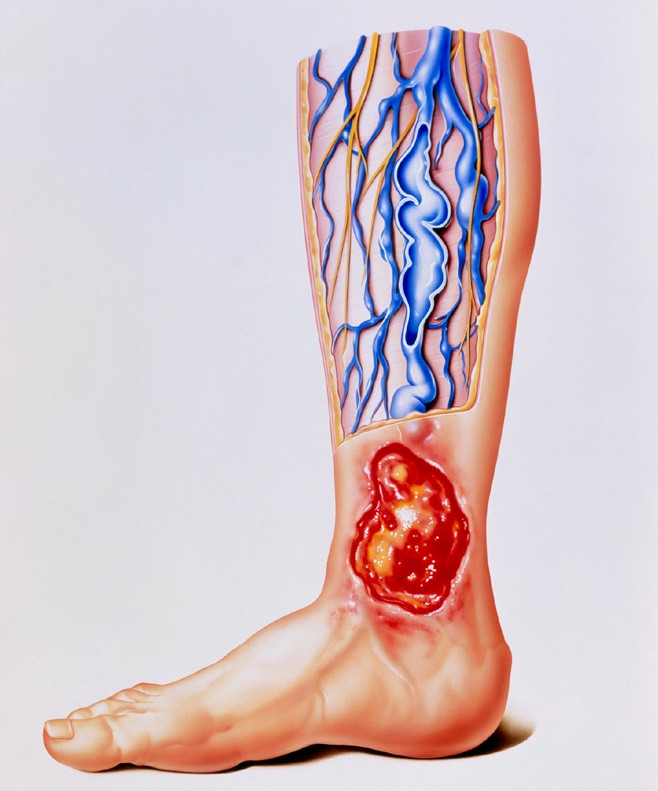VEIN DISORDERS
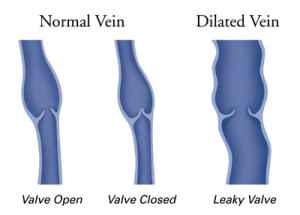 Vein disorders include several problems. They range from the most serious blood clots to minor cosmetic blemishes. Symptoms (what the patient experiences due to the disorder) may be absent, or involve leg discomfort or leg swelling or non-healing sores called venous ulcers. Chronic venous disorders are very frequent: they affect at least 20% of the entire adult population and over 50% of females over 60 years of age.
Vein disorders include several problems. They range from the most serious blood clots to minor cosmetic blemishes. Symptoms (what the patient experiences due to the disorder) may be absent, or involve leg discomfort or leg swelling or non-healing sores called venous ulcers. Chronic venous disorders are very frequent: they affect at least 20% of the entire adult population and over 50% of females over 60 years of age.
–
VENOUS REFLUX
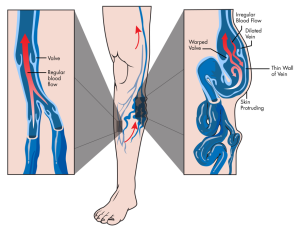 Remember, arteries bring blood into the legs (what we think of as blood supply) and veins return the blood to the heart. When you sit or stand, the blood in the veins is going uphill against gravity. One way passive flap-valves spaced every 2 to 4 inches in the veins assist the blood flow toward the heart. If the valves fail to function correctly, the blood pools down the vein causing congestion in the leg veins. This is known as venous reflux. It is the basis for the development of varicose veins, and can lead to symptoms such as pain, swelling, swollen limbs, leg heaviness and fatigue, skin changes and skin ulcers, and varicose veins.
Remember, arteries bring blood into the legs (what we think of as blood supply) and veins return the blood to the heart. When you sit or stand, the blood in the veins is going uphill against gravity. One way passive flap-valves spaced every 2 to 4 inches in the veins assist the blood flow toward the heart. If the valves fail to function correctly, the blood pools down the vein causing congestion in the leg veins. This is known as venous reflux. It is the basis for the development of varicose veins, and can lead to symptoms such as pain, swelling, swollen limbs, leg heaviness and fatigue, skin changes and skin ulcers, and varicose veins.
Spider Veins
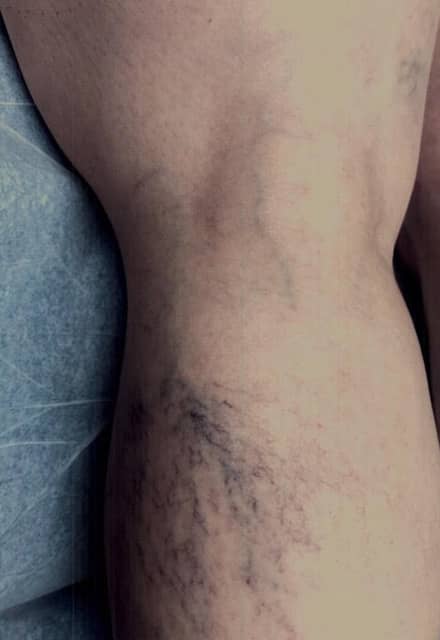
Their medical name is telangiectasias (pronounced tee-lan-jek-tay-zhuhs). They are tiny veins on the surface of the skin, and may be thinner than a hair or nearly as wide as a spaghetti noodle. They vary in prominence from pink, to red, to purple. They can be single and isolated, or occur in clusters that can look like a large bruise. They are actually dilated veins of the skin that are normally too small to see. They may enlarge as a result of hormone changes, or because of underlying vein problems.
Reticular Veins
They measure between 1-3mm in diameter and are sometimes visible below the skin. Often greenish-blue in color. They don’t bulge like varicose veins and therefore not typically felt as varicose veins are. In medical colloquialism they are called “feeder veins” because they usually “feed” or contribute/ or lead to spider veins. Best treatment results are found when the contributing reticular veins “feeder veins” are treated before the spider veins. Sometimes this requires the use of a special device called a VEIN LITE to be able to visualize and treat the reticular veins appropriately. Otherwise best outcomes can be undermined leading to situations such as inadequacy, early recurrence, blush (telangiectatic matting).
Varicose Veins
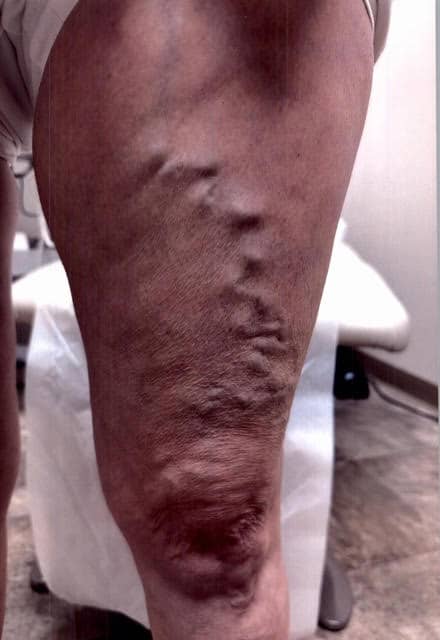
Varicose veins are veins beneath the skin (spider veins are in the skin) that have become dilated and tortuous (twisting and curling, rather than straight). They are visible as bubbles or snake-like cords under the skin. They may be the size of a telephone cord or as big as your thumb (I’ve seen some larger than lemons!). They are often uncomfortable, with heaviness, aching, or tiredness developing in the leg with prolonged standing or walking. Some people report itching over the enlarged veins. Sometimes they are sensitive to pressure, as with prolonged sitting. Some people have leg cramps at night, and some have symptoms similar to restless leg syndrome. These symptoms generally reflect the back pressure of blood pooling in the leg veins. I think that is why women have more symptoms than men. Men tolerate the back pressure with fewer symptoms because they generally have more musculature in the legs.
Venous Ulcers
Varicose veins are veins beneath the skin (spider veins are in the skin) that have become dilated and tortuous (twisting and curling, rather than straight). They are visible as bubbles or snake-like cords under the skin. They may be the size of a telephone cord or as big as your thumb (I’ve seen some larger than lemons!). They are often uncomfortable, with heaviness, aching, or tiredness developing in the leg with prolonged standing or walking. Some people report itching over the enlarged veins. Sometimes they are sensitive to pressure, as with prolonged sitting. Some people have leg cramps at night, and some have symptoms similar to restless leg syndrome. These symptoms generally reflect the back pressure of blood pooling in the leg veins. I think that is why women have more symptoms than men. Men tolerate the back pressure with fewer symptoms because they generally have more musculature in the legs.
